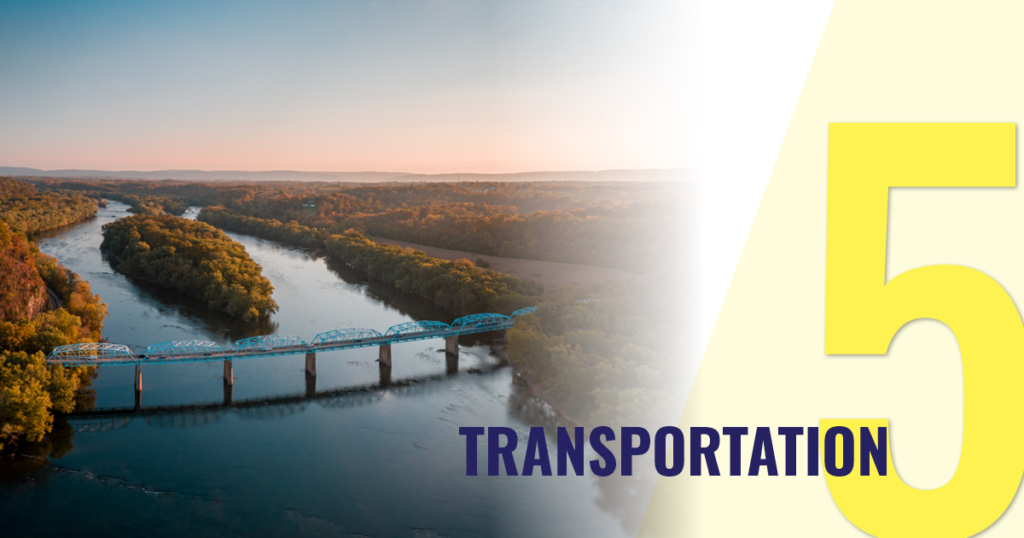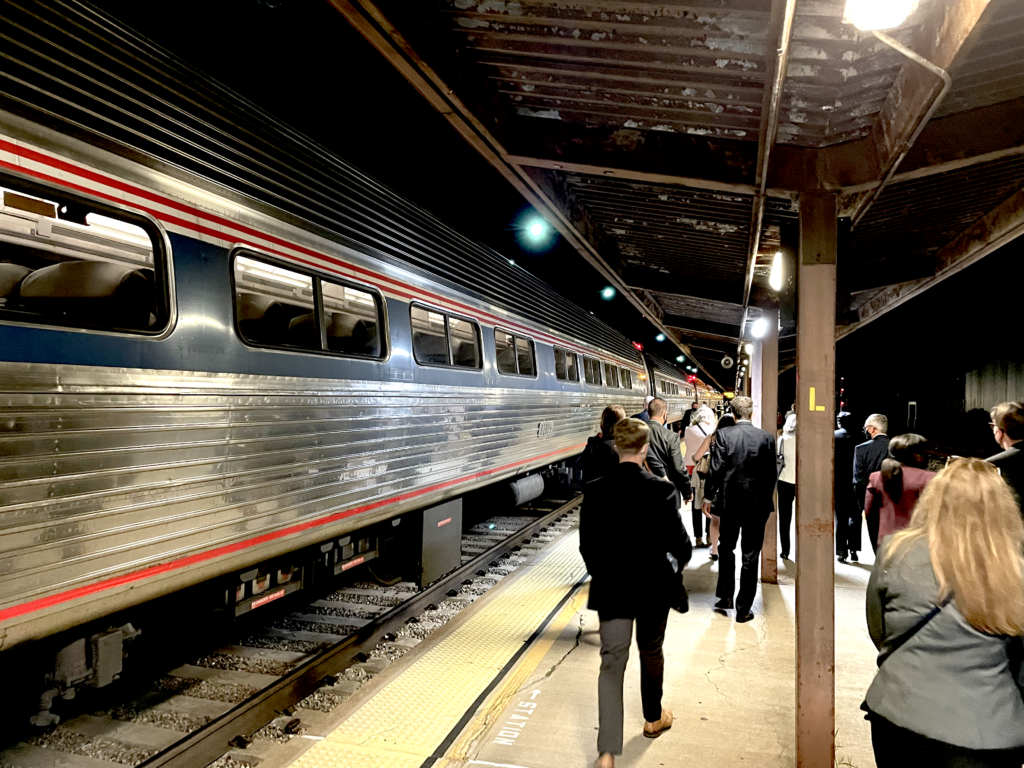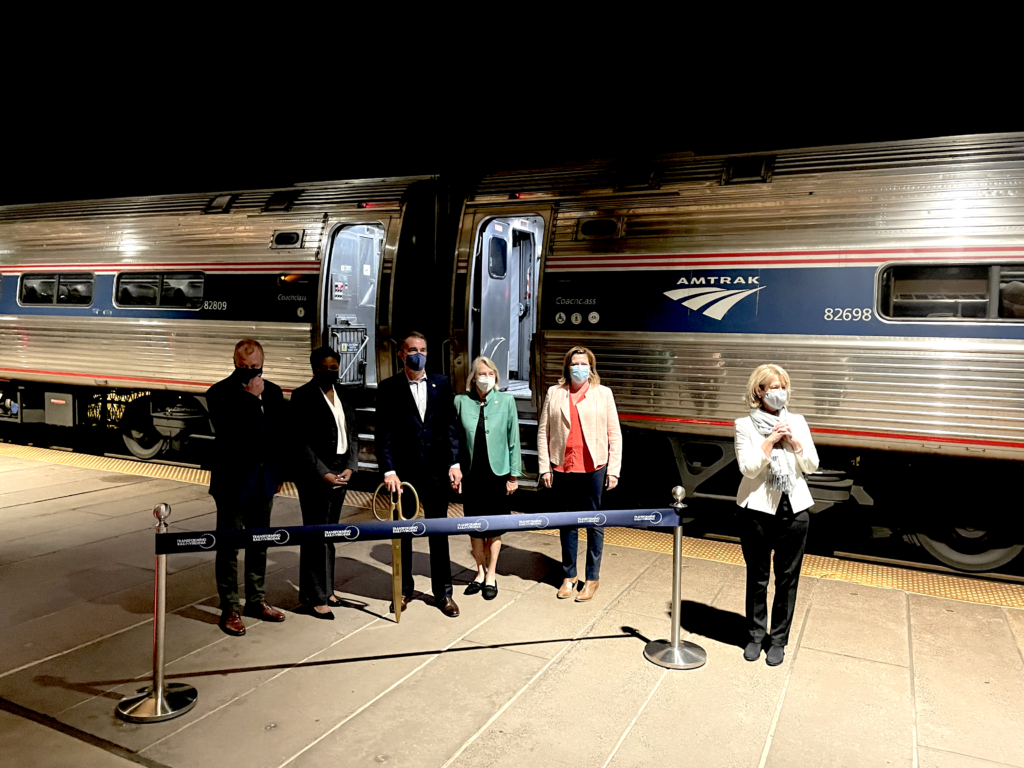
Welcome to the fourth week of the Our Common Agenda Education Series, featuring the Transportation chapter. In this week’s blog post, we will be highlighting our “Building Out Rail Capacity” policy paper and the progress made last week through the expansion of passenger rail connecting downtown Richmond to D.C. and the Northeast. Find the Rest of our Transportation Chapter policies in Our Common Agenda.
How Does Rail Capacity Help Our Environment?

Compelling economic and environmental benefits flow from maximum use of rail to move both people and goods. Virginia has made significant progress on passenger rail in recent years, but funding is needed to improve the speed, frequency, and reliability of service; extend service to new areas; modernize stations; and improve multimodal connections to them. Rail is pivotal to helping us reach our decarbonization goals.
We know that increased rail investments will result in improved rail capacity. Virginia’s rail investments from 2008–2019 resulted in:
- 31% increase in passenger rail service,
- 65% increase in ridership, and
- expanded daily Amtrak Regional service to 2.5 million more Virginians.
In 2019, our Regional trains carried over 924,000 passengers – taking over 187 million passenger miles off our roads, reducing fuel consumption by nearly 3.9 million gallons, and preventing the release of 35,000 metric tons of carbon dioxide pollution.

Why are Commuters choosing Rail over the Highway?
Travel demand is rising in Virginia, and rail investments provide additional choice to move people (and goods) efficiently throughout the Commonwealth. Rail services provide reliable, comfortable, and dependable transportation that avoids the unpredictability of I-95 found in most commutes to our nation’s capital.


New Rail Capacity in Richmond
(Finally,) Downtown Richmond’s Main Street Station gets new life as Amtrak restored Route 51 service. On September 27th, the Governor announced the passenger rail extension, bringing “travelers from Downtown Richmond to Washington D.C. when the workday begins or to New York for a lunchtime meeting.”
The increased rail capacity gives Virginia travelers more first- and last-mile options, even when their primary mode of transportation can differ between travelers. Virginia Passenger Rail Authority notes that the additional rail service also gives visitors access to:
- Multiple bus options
- Bicycle rentals and access to the Virginia Capital Trail
- Proximity to multiple electric car charging stations
Building out rail capacity doesn’t stop at Main Street Station. Read our policy recommendations for rail improvements below:
Our “Building Out Rail Capacity” Policy Recommendations
- Protect rail funding and follow through on the Transforming Rail program and complete the Commonwealth Corridor feasibility study of returning east-west (New River Valley-Charlottesville-Richmond-Hampton Roads) passenger rail service across the state.
- Modernize rail stations and provide affordable and reliable multimodal connections between stations and activity centers.
- Authorize a state study of the opportunities to expedite the electrification of our rail corridors.
- Fund a rigorous study of the economic and environmental life-cycle costs and benefits of adding new freight capacity on rail versus on the highway in the I-81 Corridor.
- Protect any potentially abandoned rail corridors through public purchase for future service and/or rails with trails.
Thank you to our Partners at Virginians for High Speed Rail, RAIL Solution, and the Southern Environmental Law Center for your work in building out rail capacity!
